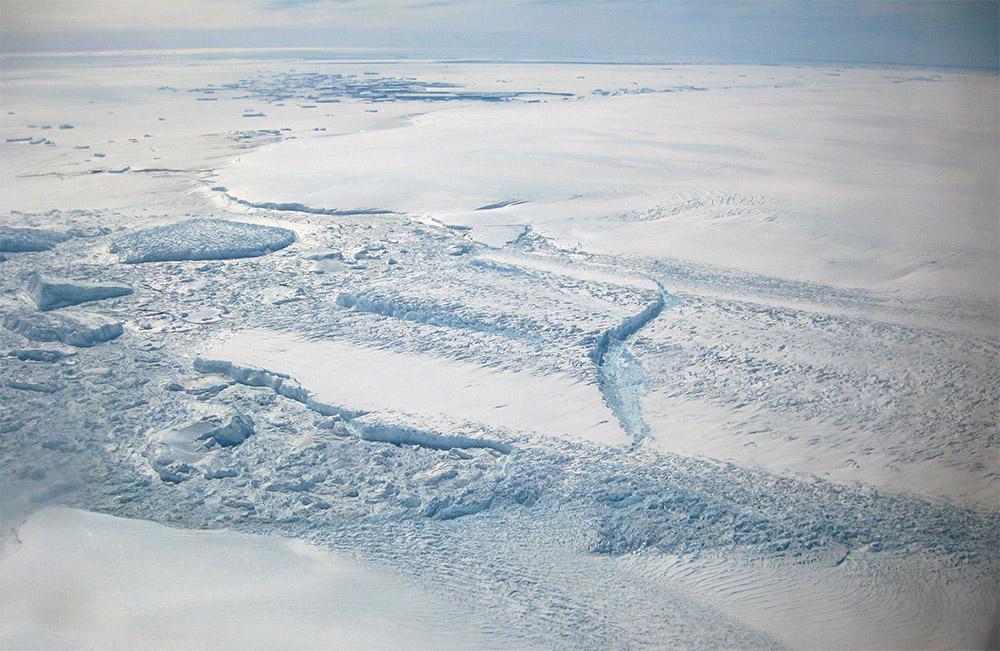Warm ocean currents caused rapid melt of Antarctic ice
The kilometres-thick ice sheets in Antarctica could melt much more rapid than first thought. New findings from NESSC-climate researchers show that between 17 and 15 million years ago, the Antartic coast was completely free of ice because of warm ocean currents that were able to reach the South Pole. It was even warm enough for plants and trees to grow, according to the researchers’ report of their findings in Nature Communications published on Monday, 22 January.
The new findings are remarkable because the research focused on the coastal area around Wilkes Land, a part of eastern Antarctica that is now covered by a kilometres-thick pack of ice. The ice sheets of eastern Antarctica, some of which are floating in the sea, have long been considered by climate scientists to be more stable and less vulnerable to the influence of global warming. This view now seems to be shifting, partly as a result of this research: The eastern Antarctic ice cap also seems to be very vulnerable to climate change.

North Sea
During the period studied by the researchers, the CO2 concentration in the atmosphere was around 600 ppm (parts per million), i.e. 50% higher than the current concentration. By studying pollen and the remains of single cell organisms preserved in the seabed, the research team determined that the sea was completely free of ice in this area. At that time, the temperature of the water off the coast of Antarctica could sometimes even exceed 16 degrees Celsius, similar to North Sea temperatures. The researchers also found soil samples originating from land with traces and pollen from plants that suggest summer temperatures of about 10 degrees Celsius and a climate warm enough to support the growth of plants such as heather and possibly even trees.
Warm ocean currents
As the direct cause of the melting of the ice sheets, the scientists point to the role played by ocean currents that changed as the climate became warmer. These shifts enabled warm ocean water originating from much warmer areas to reach Antarctica. The scientists link this development with the melting of the ice in Antarctica.
Much of today’s Antarctic ice is also in contact with ocean water, explains NESSC-researcher and first author Francesca Sangiorgi, Utrecht University: “In recent years, it has become increasingly clear that the stability of Antarctic ice not only depends on the temperature of the atmosphere, but that the temperature of the oceans also plays an important role. A higher concentration of CO2 not only entails warmer air temperatures, but also changes to the ocean currents. This research shows that warm ocean water could reach this area of eastern Antarctica, with evident consequences for the melting of the ice sheets.”
It is not inconceivable that pulses of warm water of this kind could still reach the South Pole, says Sangiorgi. “If the ice currently covering this area were all to melt, you would be faced with a rise in sea level of almost 15 metres.”

Drilling expedition
Sangiorgi is currently on a drilling exhibition in the Ross Sea, Antarctica with the Integrated Ocean Discovery Program. The expedition aims to gain a better understanding of the vulnerability of the Antarctic ice cap during climate changes in the distant geological past, in order to improve predictions of the future melting of the Antarctic ice cap.
This research is funded by the polar programme of the NWO (Netherlands Organisation for Scientific Research). The drilling expedition and the Dutch participation in it have partly been made possible by the NWO’s contribution to the Integrated Ocean Discovery Program.
Publication:
Southern Ocean warming and Wilkes Land ice sheet retreat during the mid-Miocene
Francesca Sangiorgi, Peter K. Bijl, Sandra Passchier, Ulrich Salzmann, Stefan Schouten, Robert McKay, Rosie D. Cody, Jörg Pross, Tina van de Flierdt, Steven M. Bohaty, Richard Levy, Trevor Williams, Carlota Escutia, Henk Brinkhuis
Nature Communications
doi: 10.1038/s41467-017-02609-7

